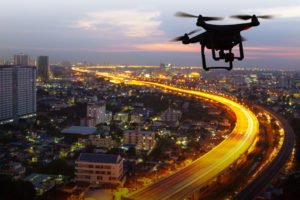Courtesy: Global Aerospace
In HBO’s hit series Westworld, advanced air mobility vehicles zip characters from one plot twist to the next in a 2050s world of AI-piloted air taxis. Advances in fuel cells, drones and air-traffic management have pushed the nascent sector into a higher altitude of innovation, However, aviation insurer Global Aerospace warns, 2020’s Realworld still has a way to go before truth becomes stranger than fiction.
In a recent report, the UK-based company notes “the roadblocks to adoption are significant.” Specifically, vehicle certification, infrastructure and public acceptance are still grounded even as startups spend billions to launch manned and autonomous advanced air mobility vehicles.
Looking up…
Despite the turbulence, drone companies continue approach sustainability. Drone providers support a growing insurance market for advanced air mobility vehicles. In 2018, only 63 percent of UAS insurance policies renewed. However, by 2019, the rate jumped to 76 percent. This suggests “there is commercial opportunity for small drones.” And while roadblocks abound, “this is positive news, suggesting that there is commercial opportunity for small drones.”
A long runway to success
Even as commercial drones grow in sectors such as construction and agriculture, the report states “the path to package delivery and the performance of other missions in urban environments has been even harder.”
“Global Aerospace has not seen any significant development in utilization of drones where FAA approval is required. The FAA’s reluctance to allow flights that require exceptions to Part 107 should be top of mind for those designing the future of urban transportation. Regulators are acting with an abundance of caution.”
While safety and a lack of global oversight are cited as further challenges, Global Aerospace highlights the fact that fleet management services have helped “create an environment where risks can be actively managed.”
“These services allow companies to control aircraft maintenance, track pilots’ training schedules and flight time, and address other key components of maintaining safe operating procedures.”
The skies ahead…
Finally, the aviation insurer recommends UAS companies focus on four considerations. Such a focus will ensure the future of advanced air mobility vehicles.
- Vehicle design and development
- Airspace planning and management
- Vehicle management and operation
- Community integration and acceptance
“Industry and government will have to be aligned in their focus on safety for advanced air mobility vehicles to develop faster than complex drone operations.”
Jason is a longstanding contributor to DroneLife with an avid interest in all things tech. He focuses on anti-drone technologies and the public safety sector; police, fire, and search and rescue.
Beginning his career as a journalist in 1996, Jason has since written and edited thousands of engaging news articles, blog posts, press releases and online content.
Email Jason
TWITTER:@JasonPReagan
Subscribe to DroneLife here.
https://dronelife.com/2020/04/23/drone-insurers-advanced-air-mobility-vehicles-face-hurdles/
 Unmanned Aerial Vehicle The latest drone news
Unmanned Aerial Vehicle The latest drone news




